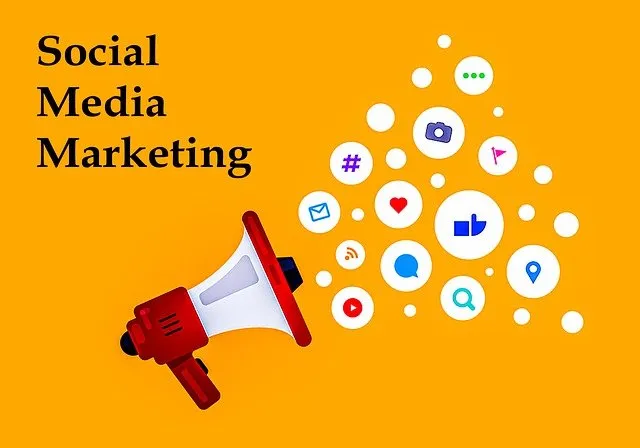Social Media Marketing generates brand awareness and enables businesses to connect with customers. Social media signal is also an SEO ranking factor for search engines. When more and more people like, comment, or share content /website URLs, the better the website ranks on search engines.
Building and maintaining social media profiles on all major social media platforms such as Twitter, Facebook, YouTube, LinkedIn, Instagram, Pinterest, Snapchat, TikTok, etc., is the best way to connect and promote products/services to the targeted audience demographics.
The key ingredient for social media marketing is having a comprehensive strategy. Without a marketing strategy, the business might be posting on social media platforms for the sake of posting, but it would not give desired results. Understanding the social media goals, who is the target audience, and what they want is essential to achieve results on social media.
With the ever-growing use of social media, it is evident that to drive an e-commerce business forward, one must create brand awareness, engage with customers and understand customer perspectives.
***Social Media Promotions Pro Tip – Use Bandwagon effect for Social Media Marketing
The bandwagon effect is the tendency of people to do, believe or follow things because many other people like and approve of them. It is similar to groupthink and herd behavior.
Create social posts that give the impression that your product is already very popular and has a high approval rating. You can add tag lines such as ‘More than 100 happy customer reviews’ or ‘Everyone is buying Xyz this holiday season, what are you waiting for?’
If you can successfully create the perception that everyone is buying your product, it’s more likely that more people will buy it. Social media channels which usually have low conversion rates and ROI can be increased from the Bandwagon effect. Launching Giveaways, quizzes, and contests on social media have the same impact on your social profile and business popularity. Posting your selected merchant reviews regularly on social media channels is a good idea.
If you have a niche website, also consider displaying ‘Someone just bought this’ pop-up banners on your website and encourage customers to share the products they just purchased on social media. ***
Social Media Marketing Strategies
-
Set Relevant and Realistic Social Media Marketing Goals
Social media marketing goals need to fit into business planning and promotional events. Strategic goals determine the progress of the business. Social media marketing goals should therefore complement overarching business goals.
Building SMART goals help the business to devise the most suitable social media strategy social media success of the online business.
SMART goals are:
Specific
Measurable
Attainable
Relevant
Time-bound
The SMARTer social media goals, the more likely the business will be able to meet them and, just as importantly, know that it is meeting them.
Businesses must set attainable and realistic goals. The company might want to have one million Facebook followers, but that is unlikely to be achievable within the next year for most businesses.
This is where it is prudent to set some limitations. It would help if you didn’t attempt to succeed on every social network at one go. There are too many social networks, and you would spread your resources too thinly. You need to perform well on the same social networks where your target market and potential customers spend their time.
The goal should be to increase brand awareness, bring online sales, Improve ROI, drive people to increase in-store sales, and grow a genuine fan base.
-
Understand Target Social Media Audience
Not all social media audiences are alike. Different types of people use social media in varying ways and for various reasons. In order to meet business goals, it is important to be using the same social media networks as the target audience. Similarly, if your business intends to engage in influencer marketing, make sure to engage with influencers whose audience matches your target market.
For example, there may have been 2.27 billion monthly active Facebook users in Q3 2018, but if the business wants to target a young demographic, it is far more likely to reach them on Snapchat or Instagram. However, if business targets people aged 25 to 34, they make up 29.7% of Facebook users and are their most common age demographic.
To be successful at social media marketing, you need to have a solid understating of your customer base. Try to establish personas for your ideal customers, what does the customer look like, and how do they spend their time on the internet? The better you can understand the demographics and psychographics of your target market, the better you will be at reaching them on the right social channels at the right time with the right message.
-
Determine Most Relevant Social Media KPI
After creating a social presence and spending time and other resources on using social accounts, it is important to establish social media metrics or social KPI (Key Performing Indexes) to track social media strategy’s success.
Unfortunately, social analytics can be a gray area because success metrics are not the same for every business. Once again, your most relevant social metrics will relate to the goals your company has set for itself.
The easy-to-measure metrics such as the number of followers cannot be trusted due to the existence of fake followers, which means that follower numbers have little value as a metric. Ideally, you should look at the marketing goals and determine which metrics will answer whether you are meeting that goal. For example, if the business goal is to increase brand awareness, then Post Reach is a relevant statistic. It will tell you how far the social content is spreading across social channels.
If business goals are more sales-based or are aimed to drive people to take a particular action, then the number of clicks can be included as the metric. Tracking Clicks per campaign will give you a good indication of what drives people to buy or take actions profitable for business.
Companies often take the most interest in the engagements on social posts. This shows how people interact with the content and whether it resounds with them. Google Analytics can also help track the number of users who visited the company website after engaging with its social media profile.
-
Investigate how Competitors’ Approach Social Media
Online business doesn’t operate in isolation. They usually have competitors who also run a social strategy. It is important to know competitors’ social media strategies. What competitors are doing on social media, their focus, who they are targeting, and what key phrases they are trying to dominate.
Conducting a competition analysis can help you better understand your business strengths and weaknesses. This also gives a better understanding of what potential customers expect from businesses in the industry. If you can spot your competitors’ weak social areas, your business will be able to exploit those gaps. For instance, if one of the competitors is influential on Twitter but has a weak Facebook presence, despite the target market using that network. In that case, it may pay your business to put more resources into Facebook, rather than competing head to head on Twitter.
You can use social media listening tools like Sendible and BuzzSumo to spy on competitors and discover their most successful social pieces of content. Once you know what type of content resound for your competitors and on which social networks, you can produce and share similar but better quality social media content.
-
Create Awesome Content to Share with Fans and Followers
Of course, to be successful on social media, you need to churn out high-quality content to share. One of the biggest mistakes businesses make is to share excessive promotional material. Social networks are designed to be social, where people can share their stories and get some entertainment. Social media platforms were never intended to be a marketplace for an eCommerce business to sell products.
Therefore, you need to balance the content carefully you plan to share socially. The content needs to be a mixture of informative and entertaining items, with a small percentage of promotional material. You also need to like and share other peoples’ content and actively participate on the social media channel to build credibility.
This is probably the most significant reason that most influencers gain that status. They know their audience well and create the perfect content to interest their followers. Your business needs to do the same. The content should match with determined business goals and consider the competitors’ social media strategy. This gives you a reasonable idea of the type of cornet that will resonate with your target audience. There is little point in creating content for other people who will never help your business meet its goals.
Images and videos are of special importance on social media. Visual content is more than 40 times more likely to be shared on social media than other types of content. Instagram has rapidly grown in importance over the last few years, and it has a significant visual focus. Top brands on Instagram report a per-follower engagement rate of 4.21%. That is 58 times higher than on Facebook and 120 times higher than on Twitter.
Each year, video content appears to increase in popularity, too. According to YouTube, mobile video consumption grows by 100% every year. 64% of customers say they are more likely to buy a product online after watching a video about it. Learn about YouTube SEO to get the best advantage of video content on social media.
6. Engage with Audience on Social Media
People don’t just go onto social networks to read, look at, or watch content. They go online to interact with other people and to be social. Successful businesses do not just broadcast to their social audiences. They engage with them too. This is why you should not attempt to cover every social network unless they have a very diverse target market and an army of social media specialists dedicated to this task. By focusing attention on the social networks where the target market frequents, you can use your resources efficiently.
It is beneficial to create custom hashtags for your business. Not only can these encourage discussions and sharing, but they also make it easier for people to search for posts that reference your business. Ideally, you should respond to all social mentions of the business and demonstrate that customer care is a priority for the company.
Research and use relevant hashtags and keywords to increase the discoverability of your content. Hashtags help categorize your posts and make them searchable, while keywords optimize your content for search engines.
Tweet, mention, and link to other people’s interesting articles and posts for a successful social media presence. Sharing good content from around the web with your followers can help you establish your authority. Sharing others’ content helps you in business networking and gets you in touch with people who can promote and share your content on the principle of reciprocity with their followers.
-
Establish the best times to post and set up a content calendar
While you could manually create and schedule all of your social posts, that can be inefficient and may not lead to the best results. Most social networks now use some form of algorithm to filter the results they give people. This means that if you post at a different time to when your target audience is online, they may never see your content.
Ideally, you will want to use one of the social scheduling tools to set up and organize multiple posts simultaneously. There are differing opinions over the number of posts a business should make on each network each day and the best times to make them.
-
Run Social Media Ads
All the major social media platforms (Facebook, Twitter, Instagram, LinkedIn, Pinterest, Snapchat, and YouTube) have social advertising features to help grow business sales and audience size. If you are looking to promote your product or service to reach a new audience, social media ads are great ways to increase the reach. By revisiting the successful organic promotions you have run in the past, you can rethink how to reuse the successful elements of the past organic offer in your paid social media promotion.
Examples of Social Media Ads:
- Storewide discounts – Audiences are given complete freedom to choose the product or service they want to purchase at a discounted price.
- New product promotions – To drive awareness and sales for new products by featuring them in an ad.
- New customer deals – To target new customers with social media ads and give them an incentive to make a first purchase.
- E-book downloads – To show industry expertise and grow social media following by promoting e-book to targeted audience.
- Webinar/event promotions – To increase online or offline event attendance by promoting an invite to upcoming events.
- Giveaways – To spark interest in the business by promoting a free giveaway. You can provide a link to a sweepstakes landing page, collect contact details, and choose a winner.
- Early Bird Offers – To use urgency marketing in social media ads, you can introduce early bird offers to the first 100 customers or provide discounts for a limited time.
To generate sales and revenue on most social media channels, you typically have to spend money on paid ad campaigns. Paid ads help your business reach a larger audience and retarget existing customers, especially because social media algorithms limit how many followers see the organic (or free) promotions. Therefore, paid social media ads have become necessary for an online business to achieve a greater ROI through social media channels.
-
Social Media Analytics – Track results and optimize the performance
It is important to track social media results to know the success of social campaigns. The process starts by setting goals and then determining the most relevant metrics ends in monitoring the results and optimizing the weak areas. Keeping a constant eye on how social media metrics are progressing to develop a better future social media marketing strategy is suggested.
Many social networks offer analytics tools that can provide much of the necessary data to track the results—for example, the Insights section on the Facebook page and the Analytics sections within Twitter and YouTube.
It is beneficial to use social media analytics tools to track success of the social media campaigns. If they show that you are producing popular, well-shared content, you should create more of that type. If the content doesn’t perform so well, you should take note of what does work, and adapt social sharing to focus on the kind of material followers preferred. You can also consider surveying social audiences to discover what they think of your social media strategy. Fans and followers may come up with valuable ideas that you hadn’t thought of. Social media planning can have multiple changes if there is a chance that you can take further steps to improve social media success.

Hunaid Germanwala is a digital marketer and content creator at Health Products For You since 2014. He has an MS from Ulm University in Germany. His mind is always buzzing with creative ideas and is eager to explore new perspectives. His motto in life is “Better to Light the Candle than to Curse the Darkness.”













Leave a Reply